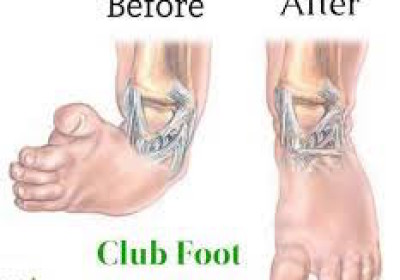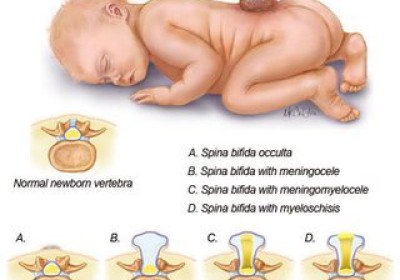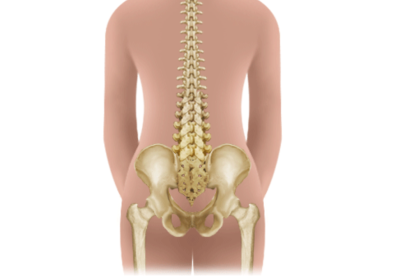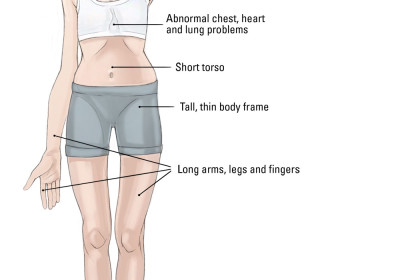- Home
- Resources
- Patient Release Form to obtain your records from other Physician
- Patient Release Form to release your records to other Physician
- Insurance and Billing
- What should I bring to Appointments
- Glossary in English
- Glosarios de Examenes de diagnostico
- High School Sports Injuries
- Stretching Exercises for Sports
- Childhood Obesity and bone, joint & muscle health
- News
- Staff
- Conditions
- Galleries
- FAQ
- Zink Blog
- Contact
ClubFoot – El pie equino
Clubfoot
Information about clubfoot is also available in Spanish: El pie equino (Clubfoot).

Clubfoot is a deformity in which an infant’s foot is turned inward, often so severely that the bottom of the foot faces sideways or even upward. Approximately one infant in every 1,000 live births will have clubfoot, making it one of the more common congenital (present at birth) foot deformities.
Clubfoot is not painful during infancy. However, if your child’s clubfoot is not treated, the foot will remain deformed, and he or she will not be able to walk normally. With proper treatment, however, the majority of children are able to enjoy a wide range of physical activities with little trace of the deformity.
Most cases of clubfoot are successfully treated with nonsurgical methods that may include a combination of stretching, casting, and bracing. Treatment usually begins shortly after birth.
In clubfoot, the tendons that connect the leg muscles to the foot bones are short and tight, causing the foot to twist inward.
Although clubfoot is diagnosed at birth, many cases are first detected during a prenatal ultrasound. In about half of the children with clubfoot, both feet are affected. Boys are twice more likely than girls to have the deformity.
Appearance
Clubfoot can range from mild to severe, but typically has the same general appearance. The foot is turned inward and there is often a deep crease on the bottom of the foot.

(Left) A child with clubfoot in both feet (called bilateral). (Right) Note the deep crease on the bottom of the foot in this child with a unilateral clubfoot.
In limbs affected by clubfoot, the foot and leg are slightly shorter than normal, and the calf is thinner due to underdeveloped muscles. These differences are more obvious in children with clubfoot on only one side.
Classification
Clubfoot is often broadly classified into two major groups:
- Isolated (idiopathic) clubfoot is the most common form of the deformity and occurs in children who have no other medical problems.
- Nonisolated clubfoot occurs in combination with various health conditions or neuromuscular disorders, such as arthrogryposis and spina bifida. If your child’s clubfoot is associated with a neuromuscular condition, the clubfoot may be more resistant to treatment, require a longer course of nonsurgical treatment, or even multiple surgeries.
Regardless of the type or severity, clubfoot will not improve without treatment. A child with an untreated clubfoot will walk on the outer edge of the foot instead of the sole, develop painful calluses, be unable to wear shoes, and have lifelong painful feet that often severely limit activity.
Parents of infants born with clubfeet and no other significant medical problems should be reassured that with proper treatment their child will have feet that permit a normal, active life.

Clubfoot that is not treated causes serious disability as a child grows.
Reproduced with permission from JF Sarwark, ed: Essentials of Musculoskeletal Care, ed 4. Rosemont, IL, American Academy of Orthopaedic Surgeons, 2010.
Researchers are still uncertain about the cause of clubfoot. The most widely accepted theory is that clubfoot is caused by a combination of genetic and environmental factors. What is known, however, is that there is an increased risk in families with a history of clubfeet.
The goal of treatment is to obtain a functional, pain-free foot that enables standing and walking with the sole of the foot flat on the ground.
Nonsurgical Treatment
The initial treatment of clubfoot is nonsurgical, regardless of how severe the deformity is.
Ponseti method. The most widely used technique in North America and throughout the world is the Ponseti method, which uses gentle stretching and casting to gradually correct the deformity.

In the Ponseti method, long-leg plaster casts are applied after the feet are correctly positioned.
Treatment should ideally begin shortly after birth, but older babies have also been treated successfully with the Ponseti method. Elements of the method include:
- Manipulation and casting. Your baby’s foot is gently stretched and manipulated into a corrected position and held in place with a long-leg cast (toes to thigh). Each week this process of stretching, re-positioning, and casting is repeated until the foot is largely improved. For most infants, this improvement takes about 6 to 8 weeks.
- Achilles tenotomy. After the manipulation and casting period, most babies will require a minor procedure to release continued tightness in the Achilles tendon (heel cord). During this quick procedure (called a tenotomy), your doctor will use a very thin instrument to cut the tendon. The cut is very small and does not require stitches. A new cast will be applied to the leg to protect the tendon as it heals. This usually takes about 3 weeks. By the time the cast is removed, the Achilles tendon has regrown to a proper, longer length, and the clubfoot has been fully corrected.

In Achilles tenotomy, the doctor uses a very small instrument to cut the heel cord.
Reproduced with permission from Chalayon O, Dobbs MB: The Ponseti technique for treating clubfoot. Orthopaedic Knowledge Online Journal 2011. Accessed August 2014.
- Bracing. Even after successful correction with casting, clubfeet have a natural tendency to recur. To ensure that the foot will permanently stay in the correct position, your baby will need to wear a brace (commonly called “boots and bar”) for a few years. The brace keeps the foot at the proper angle to maintain the correction. This bracing program can be demanding for parents and families, but is essential to prevent relapses.
For the first 3 months, your baby will wear the brace essentially full-time (23 hours a day). Your doctor will gradually decrease the time in the brace to just overnight and nap time (about 12 to 14 hours per day). Most children will follow this bracing regimen for 3 to 4 years.
Examples of a solid bar brace. (Left) The Markell Abduction Brace. (Right) The Mitchell Abduction Brace.
(Left) Courtesy of Markell Shoe Company. (Right) Courtesy of MD Orthopaedics.
There are several different types of braces — all of which consist of shoes, sandals, or custom-made footwear attached to the ends of a bar. The bar can be solid (both legs move together) or dynamic (each leg moves independently). Your doctor will talk with you about the type of brace that would best meet your baby’s needs.

The Dobbs Dynamic Abduction Brace.
Courtesy of Orthotic and Prosthetic Lab, Inc.
Babies might be fussy during the first few days of wearing a brace and will need time to adjust. More information about helping your baby adjust to bracing is provided at the end of this article in the section titled “Helpful Tips for Bracewear.”
-
 A patient after correction of a left-sided clubfoot deformity with the Ponseti cast method. Note that the calf is slightly smaller on the left side compared to the normal right leg.
A patient after correction of a left-sided clubfoot deformity with the Ponseti cast method. Note that the calf is slightly smaller on the left side compared to the normal right leg.Considerations of the Ponseti method. The Ponseti method has proven extremely effective for many children. It does, however, require the family to be highly committed to applying the braces properly every day. If the brace is not worn as prescribed, the clubfoot will recur.
A small percentage of children develop relapses despite proper bracing. If the child’s foot slips out of the boot on a regular basis, it may be the first sign of a mild recurrence of the deformity. If addressed promptly, this can usually be corrected with a few serial casts and possibly a minor surgery.
In addition, applying the Ponseti method correctly requires training, experience, and practice. Be sure to ask your pediatrician for a referral to an orthopaedic surgeon with expertise in the nonsurgical correction of clubfoot.
French method. Another nonsurgical method to correct clubfoot incorporates stretching, mobilization, and taping. The French method — also called the functional or physical therapy method — is typically directed by a physical therapist who has specialized training and experience.
Like the Ponseti method, the French method is begun soon after birth and requires family involvement. Each day, the baby’s foot must be stretched and manipulated, then taped to maintain the range of motion gained by the manipulation. After taping, a plastic splint is put on over the tape to maintain the improved range of motion.
This method requires approximately three visits to the physical therapist each week. Because this is a daily regimen, the therapist will teach the parents how to do it correctly at home.
After 3 months, most babies have significant improvement in foot position, and visits to the physical therapist are required less often. Like children treated with the Ponseti method, babies treated with the French method commonly require an Achilles tenotomy to improve dorsiflexion of the ankle.
To prevent recurrence of the clubfoot, the daily regimen of stretching, taping, and splinting must be continued by the family until the child is 2 to 3 years old.
Surgical Treatment
Although many cases of clubfoot are successfully corrected with nonsurgical methods, sometimes the deformity cannot be fully corrected or it returns, often because parents have difficulty following the treatment program. In addition, some infants have very severe deformities that do not respond to stretching. When this happens, surgery may be needed to adjust the tendons, ligaments, and joints in the foot and ankle.
Because surgery typically results in a stiffer foot, particularly as a child grows, every effort is made to correct the deformity as much as possible through nonsurgical methods. Even an infant with severe deformities or clubfeet associated with neuromuscular conditions can improve without surgery. If a child’s foot has been partially corrected with stretching and casting, then the surgery required to fully correct the clubfoot will be less extensive.
- Less extensive surgery will target only those tendons and joints that are contributing to the deformity. In many cases, this involves releasing the Achilles tendon at the back of the ankle or moving the tendon that travels from the front of the ankle to the inside of the midfoot (this procedure is called an anterior tibial tendon transfer).
- Major reconstructive surgery for clubfoot involves extensive release of multiple soft tissue structures of the foot. Once the correction is achieved, the joints of the foot are usually stabilized with pins and a long-leg cast while the soft tissue heals.
After 4 to 6 weeks, the doctor will remove the pins and cast, and typically apply a short-leg cast, which is worn for an additional 4 weeks. After the last cast is removed, it is still possible for the muscles in your child’s foot to try to return to the clubfoot position, so special shoes or braces will likely be used for up to a year or more after surgery.
The most common complications of extensive soft tissue release are overcorrection of the deformity, stiffness, and pain.
Your baby’s clubfoot will not get better on its own. With treatment, your child should have a nearly normal foot, and he or she can run and play and wear normal shoes.
The affected foot is usually 1 to 1 1/2 sizes smaller and somewhat less mobile than the normal foot. The calf muscles in your child’s clubfoot leg will also stay smaller, so your child may complain of “sore legs” or getting tired sooner than peers. The affected leg may also be slightly shorter than the unaffected leg, but this is rarely a significant problem.








